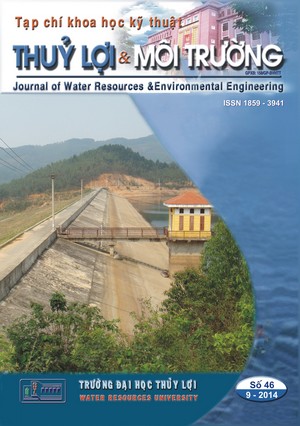Research on diseases polluted water transport in a aquaculture system with water supply and drainage combined channel - propose models for adaptation
Abstract
In recent years, the construction and development of irrigation systems serving aquaculture are still using a combination of two forms of water supply and drainage like farming but different in size and form works. Most of these systems design water supply and drainage of the pond in one channel. Even on a large system (many hectares) and has only one combined channel. It has such a direct impact to the water supply to the pond, so the situation of water supply and drainage are not active. On the other hand due to the combined channel, the impact from waste water to supply water for fisheries is very large. In reality, the fishery ponds were affected by water pollution, the possibility is very high risk, directly affecting aquaculture production. This study uses transmission components theory to calculate polluted water transport in a system with combined water supply and drainage channel. The results show that polluted (diseases) water spread rapidly and large in the system. As of perennial water source in the system is very high, the low water exchange capabilities far the main channel, the secondary channels, particularly low at the end of dead-end channels. From the simulation results, the study suggests several models of hydraulic work for aquaculture which can be applied to the area of the Mekong Delta.

